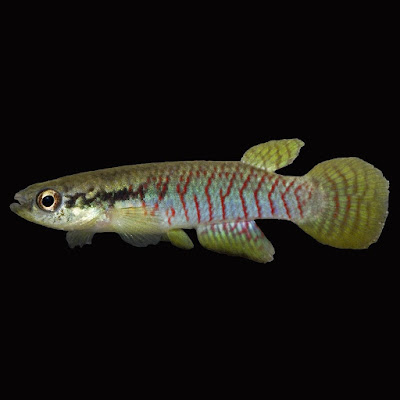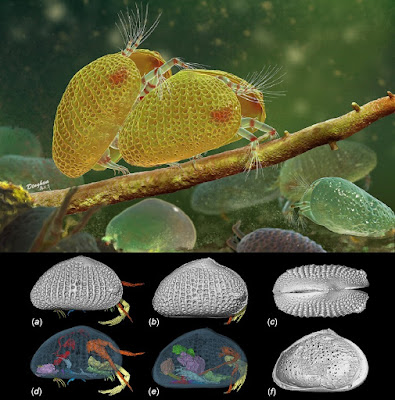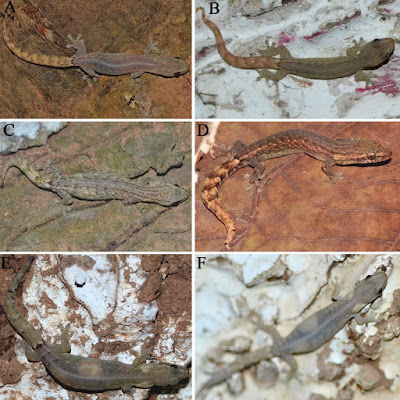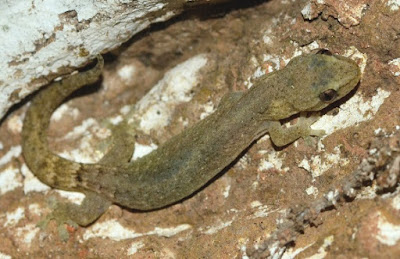[Most Recent Entries] [Calendar View]
Thursday, September 17th, 2020
| Time | Event | ||||||
| 9:54a | [Ichthyology • 2020] Melanorivulus larissae • A New Species of the Melanorivulus pictus Species-group (Cyprinodontiformes: Rivulidae) from the Rio Paraná Basin in Brazil Abstract A new species of the genus Melanorivulus belonging to the Melanorivulus pictus species group is herein described, from a tributary of the Rio Grande, Rio Paraná basin, São Paulo State, Brazil. The new species can be distinguished from all other species of the Melanorivulus pictus species group by the unique presence of sides of body of males light bluish gray with 10–12 oblique red bars, 8 of which chevron-like, bifurcated and complete, i.e., running from dorsum to ventral area, and 2–4 incomplete, with vertices of the chevron-like bars along midbody, pointing forward. Comments on the putative relationships of the new species, as well as concerning its conservation status, are presented. Keywords: Cyprinodontiformes, Rio Grande basin, Rivulus, Melanorivulus apiamici, Melanorivulus leali, Cerrado, Killifishes
Etymology. Named in honor of Larissa da Silva Sobral, daughter of the discoverer of the species. Eric Venturini Ywamoto, Dalton Tavares Bressane Nielsen and Claudio Oliveira. 2020. Description of A New Species of the Melanorivulus pictus Species-group (Cyprinodontiformes: Rivulidae) from the Rio Paraná Basin in Brazil. Zootaxa. 4852(1); 125–132. DOI: 10.11646/zootaxa.4852.1.6 | ||||||
| 10:29a | [Paleontology • 2020] Myanmarcypris hui • Exceptional Preservation of Reproductive Organs and Giant Sperm in Cretaceous Ostracods (Crustacea: Ostracoda)
Abstract The bivalved crustacean ostracods have the richest fossil record of any arthropod group and display complex reproductive strategies contributing to their evolutionary success. Sexual reproduction involving giant sperm, shared by three superfamilies of living ostracod crustaceans, is among the most fascinating behaviours. However, the origin and evolution of this reproductive mechanism has remained largely unexplored because fossil preservation of such features is extremely rare. Here, we report exceptionally preserved ostracods with soft parts (appendages and reproductive organs) in a single piece of mid-Cretaceous Kachin amber (approximately 100 Myr old). The ostracod assemblage is composed of 39 individuals. Thirty-one individuals belong to a new species and genus, Myanmarcypris hui gen. et sp. nov., exhibiting an ontogenetic sequence from juveniles to adults (male and female). Seven individuals are assigned to Thalassocypria sp. (Cypridoidea, Candonidae, Paracypridinae) and one to Sanyuania sp. (Cytheroidea, Loxoconchidae). Our micro-CT reconstruction provides direct evidence of the male clasper, sperm pumps (Zenker organs), hemipenes, eggs and female seminal receptacles with giant sperm. Our results reveal that the reproduction behavioural repertoire, which is associated with considerable morphological adaptations, has remained unchanged over at least 100 million years—a paramount example of evolutionary stasis. These results also double the age of the oldest unequivocal fossil animal sperm. This discovery highlights the capacity of amber to document invertebrate soft parts that are rarely recorded by other depositional environments. Keywords: ostracods, giant sperm, Cretaceous, sexual reproduction
Myanmarcypris hui gen. et sp. nov. Etymology: Myanmar (the country of origin) + Cypris; hui (after the collector of the amber piece, Mr Cheng HU). Type locality and stratigraphy: Hukawng Valley, Kachin Province, Myanmar; upper Albian–lower Cenomanian. He Wang, Renate Matzke-Karasz, David J. Horne, Xiangdong Zhao, Meizhen Cao, Haichun Zhang and Bo Wang. 2020. Exceptional Preservation of Reproductive Organs and Giant Sperm in Cretaceous Ostracods. Proceedings of the Royal Society B. DOI: 10.1098/rspb.2020.1661 100-million-year-old amber reveals sexual intercourse of ostracods | ||||||
| 10:52a | [Herpetology • 2020] Hemiphyllodactylus minimus • A Novel, Diminutive Hemiphyllodactylus Bleeker, 1860 (Squamata: Gekkonidae) from A Sacred Grove in Odisha, eastern India
Abstract We describe a distinct new species of Hemiphyllodactylus from a sacred grove near Humma in Ganjam District of Odisha state, eastern India. Hemiphyllodactylus minimus sp. nov. is the smallest member of the genus and can be diagnosed from all peninsular Indian congeners by its small body size (SVL ≤32.2 mm, n=11), having 15–18 dorsal scales and eight or nine ventral scales at mid-body contained within one longitudinal eye diameter, nine or ten precloacal pores separated by 4–6 poreless scales from a series of six or seven femoral pores on each thigh in males, lamellar formula of manus 2222 and of pes 2332 & 2333, as well as subtle colour pattern differences. Additionally, the new species is 16.0–22.7 % divergent from all other peninsular Indian Hemiphyllodactylus in uncorrected ND2 sequence data. The new species is the first member of the genus described from Odisha state and also the first Hemiphyllodactylus known from < 100 m asl. The discovery of Hemiphyllodactylus minimus sp. nov. from a low elevation coastal locality in the Eastern Ghats open ups the possibilities that the genus could be more widespread than currently understood and potentially harbour many more distinct undescribed lineages. Therefore, dedicated fine-scale sampling efforts are needed to uncover the true diversity and distribution of Hemiphyllodactylus in the region. Keywords: Reptilia, Biogeography, conservation, northern Eastern Ghats, taxonomy
Hemiphyllodactylus minimus sp. nov. Suggested common English name. Ganjam slender gecko. Etymology. The specific epithet is the Latin word for smallest as this is the smallest known species of the genus Hemiphyllodactylus. Pratyush P. Mohapatra, Akshay Khandekar, Sushil Kumar Dutta, Cuckoo Mahapatra and Ishan Agarwal. 2020. A Novel, Diminutive Hemiphyllodactylus Bleeker, 1860 (Squamata: Gekkonidae) from A Sacred Grove in Odisha, eastern India. Zootaxa. 4852(4); 485–499. DOI: 10.11646/zootaxa.4852.4.6 |
| << Previous Day |
2020/09/17 [Calendar] |
Next Day >> |














